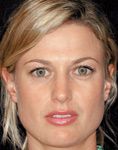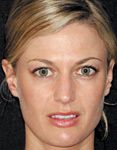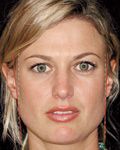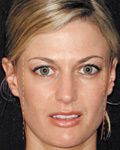- General Dermatology
- Eczema
- Chronic Hand Eczema
- Alopecia
- Aesthetics
- Vitiligo
- COVID-19
- Actinic Keratosis
- Precision Medicine and Biologics
- Rare Disease
- Wound Care
- Rosacea
- Psoriasis
- Psoriatic Arthritis
- Atopic Dermatitis
- Melasma
- NP and PA
- Skin Cancer
- Hidradenitis Suppurativa
- Drug Watch
- Pigmentary Disorders
- Acne
- Pediatric Dermatology
- Practice Management
- Prurigo Nodularis
Article
Lower-face Botox: 'Universal Angle of Beauty' aids aesthetic assessment
A concept called the "Universal Angle of Beauty," which measures the slope from the cheekbones to the chin, can help physicians and patients assess botulinum toxin treatments of the lower face, the concept's creator says.

Key Points

In the past five years, physicians have injected virtually every facial muscle with Botox (botulinum toxin A, Allergan), usually with excellent results, says Steven Liew, M.D., a plastic surgeon in Sydney, Australia, and medical director of Shape Clinic.
"Cosmetic medicine is somewhat like fashion - the public is hungry for what's new," Dr. Liew says.
Masseter hypertrophy, also known as square-face syndrome, occurs in up to 20 percent of the Southeast Asian population, according to an Allergan survey.

Although the incidence of "square face" in the Western population remains unknown, Dr. Liew says an informal survey conducted in a Sydney clinic showed that, "To our surprise, about 25 percent of Australian plastic surgery patients have these problems."

Also unknown are how botulinum toxin's efficacy differs in Eastern and Western populations, and the extent to which Asian and Western aesthetic ideals converge, he says.

"While these tools are all very good, particularly for university research purposes, they're very complex and difficult to understand, let alone communicate to our patients.
"What we need is a tool that's very simple, user-friendly, easy to communicate and, more importantly, applicable to all racial backgrounds," Dr. Liew says.
Universal beauty
In considering a universal standard of beauty, Dr. Liew analyzed facial photos of 50 female celebrities of all racial backgrounds. More specifically, on each photo, he drew three lines: One delineating the vertical ramus of the jaw, one delineating its horizontal ramus and a third line parallel to the vertical midline of the face at the intersection of the first two lines.
He then computed the angle of inclination between the vertical line and lines representing the vertical and horizontal ramus of the jaw.
In Caucasian models and actresses, the inclination of the vertical ramus is typically around 10 degrees, versus approximately 9 degrees for models of African descent and 12 degrees for Asian subjects.





